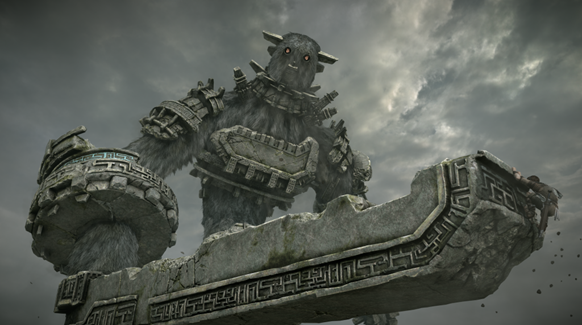This article previously appeared on Crossfader
We sure like retelling the same old stories, huh? There’s a certain level of enjoyment to be had when indulging in any form of artistic expression subsequent times, whether it’s re-experiencing books, movies, video games, and so on. If the last 15-odd years is anything to go by, I’d say we’re downright obsessed with that dip into the past, and the gaming industry has generally gone in two routes to appease our ravenous yet contemptuous hunger for nostalgia: the remaster, involving upgrades of varying effectiveness to graphical resolution, as well as the more resource-intensive remake.
Of the two, remakes are predisposed to being the target of our cynical ire, leading to a degree of slighting by existing fans because there lies a degree of change to the original. However, this change is also predominantly the key appeal of having any medium undergo a remake. Remakes often involve rebuilding the game from the ground up, and in doing so allow the developer to add their own elements to augment the experience we’ve previously enjoyed. Sometimes this works out very well and the developer manages to bring new life to an already cherished work. Other times it fumbles, making decisions that sully the piece and can diminish our enjoyment of it. Obviously, we hope for the former.

We all try to forget the time of SPACE INVADERS: INVASION DAY. To no avail.
This brings us to the much-beloved SHADOW OF THE COLOSSUS, which recently hit shelves once again in the form of a PlayStation 4 remake. The game was developed under the supervision of its original creator, Fumito Ueda himself, and feels nearly identical to the PlayStation 2 version. I’m not going to delve too much into whether it’s a good game or a bad game (it’s the first option, go play it if you haven’t already), but rather whether this new iteration of COLOSSUS succeeds in being a “good” remake.
The folks at Bluepoint Games did a pretty good job at keeping the mechanics of the game largely intact, while also adding some much-appreciated technical tweaks. The core gameplay hasn’t changed at all, still boiling down to riding on your trusty horse, scaling your massive adversaries, stabbing the glowy bits a few times, and then starting the whole affair all over again. Small modifications, such as the addition of autosaving and an improved control scheme, help to make the game more accessible to modern audiences. This is especially true of the latter; giving players designated buttons for rolling and a simpler input for climbing surfaces is a definite step up from the awkward layout of yesteryear, and removes some of the general clunkiness of the previous iterations. The new COLOSSUS’s capacity for running at a smooth 60 FPS is also an appreciated change, considering just how sluggish the original game (and hell, even it’s modern successor) was in this respect. All in all, Bluepoint made a concerted effort to maintain the familiar core elements, all while updating the interface to measure up to the action game standards of this era. For the most part, anyway.

The camera is still the most difficult Colossus in the game.
The most conspicuous change from the original work is the increased scale of the presentation, especially in regard to the game’s visuals. The remake showcases the PS4’s improved horsepower, and gives the classic a next-gen veneer. This version of the game looks light years better than its predecessor, including its subsequent remaster. The original COLOSSUS pushed the PS2’s capabilities to its limits, forcing the game to chug along at a terribly low FPS with admittedly underperforming visuals. Certain choices were made to help accommodate the system and lessen its workload, the most notable of which being the game’s iconic, intense application of bloom shading (more on that in a bit).
The PS3 remaster managed to fix some of the issues imposed by the original’s hardware, locking the game at a more consistent 30 FPS, while also upping the resolution of the environment. However, character models appeared jagged and artifacted in comparison, and there were now odd inconsistencies in the frame rate when climbing Colossi as a result of the locking.
Console hardware has dramatically improved since then, and the level of detail the PS4 can afford allows this remake to exude cinematic atmosphere that the original simply could not. The forests and grassy vistas are now lush and resplendent, rendering vegetation at much greater distances. Dynamic lighting allows for the casting of striking shadows for dramatic flair. Particle effects like dust, sand, and volumetric fog now seep into spaces to create a layer of tangibility and texture to the world you traverse. The water actually looks like water now!

GAZE UPON ITS BEAUTY!
These improvements extend beyond just the environment. The stars of the show, the Colossi, have finally been realized in their proper majesty. They now have opposable, moving digits, varied skin types, armor that crumbles, and dense fur that sways with their movements and the blowing of the wind. This, in conjunction with the game’s improved sound design, makes these towering constructs feel more alive, distinct, and most importantly, more sympathetic than their previous iterations. It’s that last facet that really exemplifies the remake’s merit: the game is ultimately more about the Colossi than the player, and being able to better connect to these (mostly) peaceful gargantuans, feeling sorrow as you fell them, makes the impact of the narrative that much stronger. While the focus on making the world more vibrant, more detailed, and more “realistic” does have its benefits, it’s the technological upgrade to the star characters that make this remake a thematic, not just technical, modernization.

Just look at that big, handsome boy
That being said, there is another point to be made regarding this shift towards a more hi-def presentation. While the new visual elements are all absolutely gorgeous, there is a noticeable shift to the tone of the work cast by these changes. All of Ueda’s work, be it ICO, COLOSSUS, or THE LAST GUARDIAN, is focused on its artistic storytelling first, and being a game second. What little of the world you are told of in COLOSSUS divulges that the lands you trespass are forbidden, meant to be forgotten, and where no life remains (the occasional salamander notwithstanding).
Despite primarily being used as a way to relieve some of the graphical workload of the original, COLOSSUS’s iconic overuse of the bloom effect helped to communicate that notion. In combination with the game’s vast, barren world, the faded colors and unnatural brightness managed to establish a sense of unease, of the ethereal, a feeling that you do not belong there. The Colossi were also affected by this decision; in light of their muted detail, the bloom saturated the darker parts of their anatomy and made the fur and masonry more flush, blurring the line between creature and construct. This in turn made these lumbering giants feel more mysterious and imposing, adding to the setting’s already otherworldly vibe.

The bloom was a design choice born from limitation—it was made primarily to mask the short draw distances that would simply look hideous in many of COLOSSUS’s wider landscapes. Yet it also added a unique ambiance that complements the somber tone of the narrative. The remake’s shift toward a more realistic quality creates a significantly different telling of the world of the Colossi; the structures and story themselves have stayed the same, but the mood and context has been lost. Opting to remove the bloom from the game was not just surface-level facelift; its removal cost the work its atmospheric identity.
For all the good the new visuals do in enhancing the sensory appeal of the world and making the Colossi feel more “human” (for lack of a better term), it also oddly makes the world itself feel more hollow, robbed of some of its magic by focusing so hard on realism. The world of the Colossi felt infinitely desolate and lonely when playing the original, even more so as you killed the only real living things that existed within the world to further your own selfish ends. This remake’s presentation of COLOSSUS loses some of that dour feeling when you’re marveling at all the dense new greenery, fur effects, and stark dynamic lighting. The majority of the locales too closely resemble other games of this generation, looking more like they were pulled out of a travel catalog than constructed to fit its own unique setting. COLOSSUS no longer feels alien. Quite the contrary, the push for upping the graphics makes the game feel almost too real, too pristine, too perfect. It certainly doesn’t feel like a Team Ico game. This remake feels less like the work of art it was in the past, and more like what it actually is: a game.

Not even all the pretty water effects in the world will sway my judgement
The unfortunate reality the remake brings to light is that some titles are better left alone. It’s not the first remake to ever create that situation; The HD remake of SILENT HILL 2 caused a similar dilemma in removing most of the game’s heavy fog (something that served the same technical function as the bloom in COLOSSUS), consequently destroying the fear factor that came with blindly groping through the mist.
Thankfully, the changes in COLOSSUS’s remake are not so glaringly detrimental. I can’t discredit Bluepoint for making the decisions that they did with this work, as they did effectively refine the technical aspects and emphasized the humanity of the Colossi. Had the game kept the bloom intact despite no longer having the technological need for it, perhaps I would feel less conflicted. But the fact remains that bigger does not always mean better; no amount of varnish can replace the spirit that is lost with the shift toward the modern standard.
Ultimately, we’re left with two versions of SHADOW OF THE COLOSSUS: one that shines despite its imperfections, and another that will never be as bright, even after being thoroughly polished. While far from irredeemable (it is still COLOSSUS, after all), the changes that the remake employs work against it just enough to make it less than its source material. Whether this game becomes the “definitive” version of COLOSSUS for newer audiences because of the choices it made has yet to be seen. Regardless of where that conversation goes, COLOSSUS will continue to live on.
SHADOW OF THE COLOSSUS (2018) is available on PlayStation 4.
















Comments